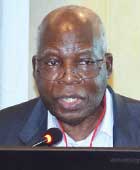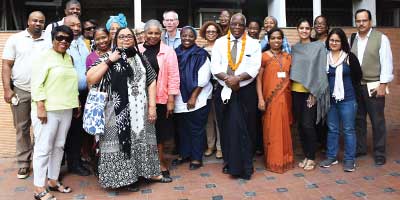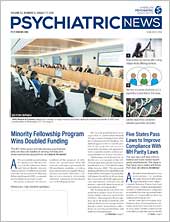The subcontinent of India is a land of temples, fragrances, and mysticism. A visit there is bound to conjure up exotic and romantic images. There is the Taj Mahal in its splendor and the attractions of the Crystal City. In addition, there are inward-facing aspects of the culture that have produced yoga and, more recently, mindfulness, which is sweeping the West with its philosophical foundations and healing applications. So it did not take much effort to rationalize the choice of New Delhi as a venue for a conference of the Black Psychiatrists of America (BPA) last November with the theme stated in the title of this article.
The BPA has two annual conferences: one is a transcultural conference held outside the United States, and the other is a domestic conference held in the spring. The choice of New Delhi for the BPA’s 2017 transcultural conference last November was based on a variety of factors, some historical and others contemporary. In the United States, a good percentage of mentally ill patients of African origin are treated by psychiatrists of Indian background. Therefore, BPA members thought that a conference in India bringing together psychiatrists of Indian and African origin could be productive in an era of globalization.
This sentiment was enhanced for me by the discovery of a major exhibition at the famous Schomburg Center for Research in Black Culture in New York. The exhibition illustrated the long history of blacks in India. Blacks occupied a variety of wide-ranging positions including courtiers, army generals, counselors, and indentured servants. Today, aspects of African culture can be found in India in music, food, and dance. Also, India and many African nations share a common history of a colonial past and trade.
The New Delhi conference brought me to India for a third time, and each visit gave me a different view and perspective on the culture. The circumstances of this last visit reminded me of an earlier historic conference—a joint meeting of the Association of African Psychiatrists, the BPA, and APA in Nairobi, Kenya, in 1986. As an African and member of the three organizations, I was asked by several of my African colleagues why there is a separate association for black psychiatrists. I told them that the BPA was formed in 1968 against the backdrop of the U.S. civil rights movement. Many African-American psychiatrists were dissatisfied with APA because of its lack of support and insensitivity toward their goals and needs.
The New Delhi conference was as successful as it was instructive. The plenary lecture was given by Dr. Thara Rangaswamy, the director of the Schizophrenia Research Foundation in Chennai, India. The lecture, titled “Delivering Mental Health Care to Millions—Meeting the Challenge,” was very well received. I was interested in the social security systems in India. At a World Psychiatric Association conference in Greece several decades ago, I made a presentation on the participation of mentally ill individuals in the social safety-net programs. At that conference an Indian colleague told me that he feared that the U.S. system would not work in India because the benefit payments would be a disincentive to return to work.
One highlight of the trip was a visit to the psychiatry department of the All Indian Institute of Medical Sciences. We were intrigued by the large caseloads of our colleagues. We also found it impressive that hospitalized patients are required to have a family member available on the ward at all times. The tour of the psychiatric wards was followed by a discussion period during which the questions on both sides were frank. The Americans asked about the caste system, the treatment of women, and the abuse and harassment of African students and diplomats. The plight of victims of the Dalit is well known, and some suicides have been attributed to the system.
Another highlight of the trip was my visit to the Raj Ghat, the place where Mahatma Gandhi was assassinated and buried. Coincidentally, this year’s BPA spring conference was held in Memphis, Tenn., where the Rev. Martin Luther King Jr. was assassinated at the Lorraine Motel.
My report would be incomplete without reference to the major advances that India has made industrially and agriculturally, such as the green revolution. Moreover, India has been contributing to the theories and practices of global health and mental health. While these efforts are most welcomed, I cannot fail to mention the smog conditions in New Delhi during our visit. It indeed posed a threat to our visit as some participants feared being exposed to the air. The mental health consequences of climate change are becoming more apparent, and I hope that our Indian colleagues will devote more energy to issues related to climate change as they also advocate for gender and ethnic equality.
I and my colleagues at the BPA hope that the New Delhi meeting is the first of many contacts with our Indian colleagues. I, on behalf of the BPA, wish to thank them for their kindness, generosity, and openness, and we hope that in the not-too-distant future, we will have the opportunity to reciprocate. ■


